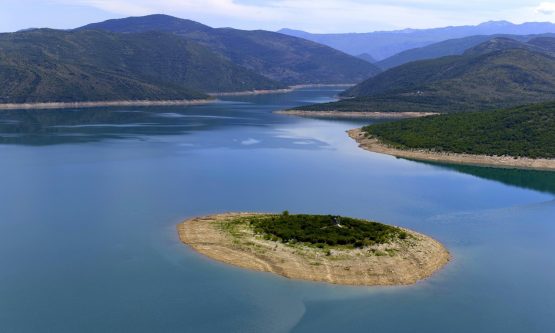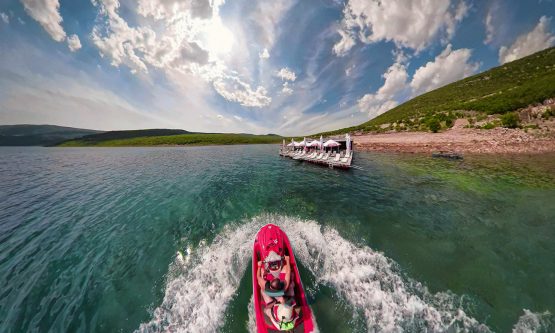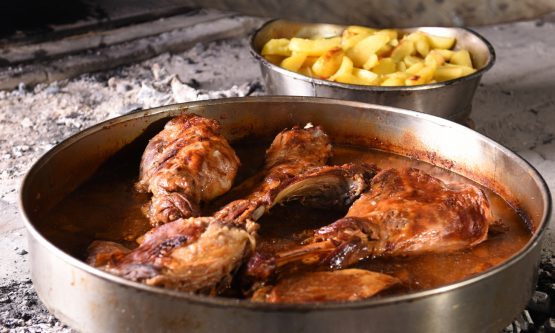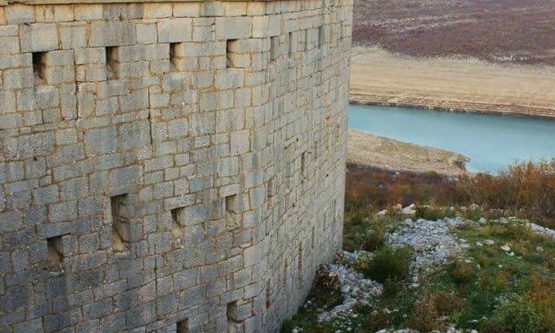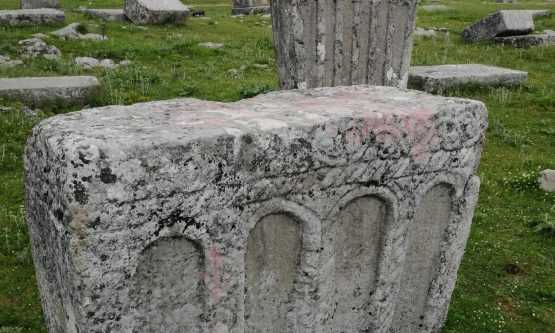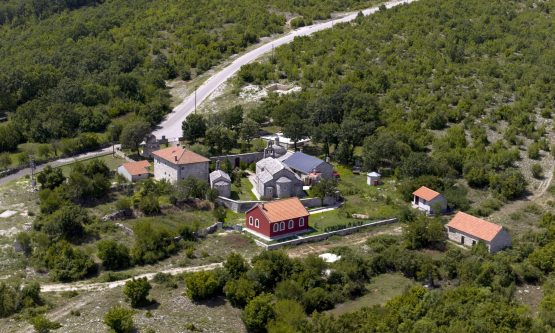Welcome to Ugljevik
Ugljevik, a place known for its kind people and warm hospitality, is nestled in the central part of Republika Srpska, on the eastern slopes of Mount Majevica, overlooking the Semberija region. If your travels bring you to our municipality, you’ll be pleasantly surprised by the diverse offerings we have to offer, including religious tourism, cultural and historical trails, recreational areas, and a rich culinary scene.
Culture
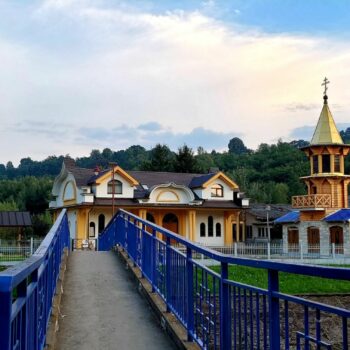
The discovery of medieval stećci (tombstones), Roman fortifications in the villages of Tutnjevac and Mezgraja (Jablan grad), and an ancient Greek coin at the Baljak hill in Bogutovo Selo, all attest to the fact that the area of present-day Ugljevik was inhabited in the distant past.
The Middle Ages in this region were marked by constant changes of power. Hungarian kings, Serbian despots, and Bosnian rulers succeeded one another.
The medieval locality of Teočak in the Ugljevik area, a fortified town, is first mentioned in historical sources around 1432, in connection with the Serbian despot Đurađ Branković. It is believed that the church in Teočak was also built at that time (later converted into a mosque and still standing today – according to some sources, it is the oldest mosque in Bosnia and Herzegovina), where the relics of Saint Luke the Evangelist were kept for some time.
The name Ugljevik is first mentioned in written documents in the Turkish census of 1533. It got its name from surface coal, whose organized production began only in 1899, under the rule of the Austro-Hungarian Monarchy.
With plans to build a thermal power plant and expand the mine to increase coal production for electricity generation, the disappearance of Old Ugljevik was foreseen.
Just five kilometers away, in the plain near the Janja River, in the 1980s, the construction of a new Ugljevik began, where entire villages and hamlets that were located within the new mine were relocated.
The area of the municipality has a very significant offer of religious tourism. In such a small area, there is a large number of religious sites of great importance and value. It is certainly necessary to mention the Tavna Monastery, located at the border of the municipalities of Ugljevik, Bijeljina, and Zvornik, as well as the Monastery of Saint Alexander Nevsky, the Monastery of the Holy Cross in Svojo Polje, the Temple dedicated to the Protection of the Most Holy Theotokos, the Temple of Saint Stephen the Protomartyr in Mezgraja near Ugljevik, the Temple of Saint Petka Paraskeva, the Temple of the Holy Unmercenaries Cosmas and Damian, a wooden church dedicated to Saint Sisoy, and the Church of the Prophet Elijah in Gornje Zabrđe.
Nature
The mountainous terrain of Majevica
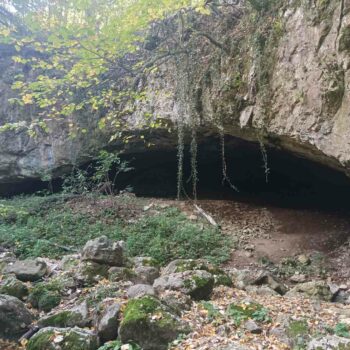
Located in the village of Donja Krcina, on the eastern slopes of Mount Majevica, in the municipality of Ugljevik, lies Šuplja Stijena (Hollow Rock). This site is about two kilometers away from the Tavna Monastery and can be reached by a road connecting the villages of Donja and Gornja Krcina. A short walk from the road is required to reach this location.
Šuplja Stijena is an interesting natural, more specifically geomorphological feature. It is an opening in the rock, an undercut that resembles a cave entrance. The opening is about 20 meters long, and its highest point is about three meters tall.
The Domana River flows past Šuplja Stijena, where several watermills have been preserved, adding to the charm of the location. This site is frequently visited by nature lovers, hikers, and mountaineers.
Pine forest
Forests are the lungs of our planet. A true gem for tourists in this region is the Pine Forest, located not far from the center of Ugljevik.
This area is perfect for sports and recreational tourism. There are numerous marked hiking trails for those who enjoy walking and immersing themselves in nature.
In the heart of the forest, you’ll find the hunting lodge of the “Rudar” Hunting Association, which manages this area.
Visitors can enjoy the clean and healthy air, relax in nature, breathe fresh air, and find peace and quiet. For those with respiratory problems, a walk through the pine forest is recommended, as the pine needles open in late May or late August, making the air the cleanest and most beneficial at that time. Pine needles are rich in healing essential oils and can be used to treat conditions such as coughs, hoarseness, and bronchitis.
The beauty of nature can be seen throughout the year, so visit this oasis of health and natural beauty.
Gastro
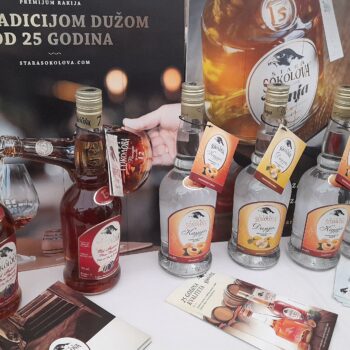 Ugljevik, renowned for its extensive orchards, celebrates its fruit brandies at the annual ‘Plum, Fruit Brandy, and Honey Fair’. This traditional event features a competition among local producers and offers visitors the chance to taste a wide variety of these aromatic spirits.
Ugljevik, renowned for its extensive orchards, celebrates its fruit brandies at the annual ‘Plum, Fruit Brandy, and Honey Fair’. This traditional event features a competition among local producers and offers visitors the chance to taste a wide variety of these aromatic spirits.
Tourist organization of Ugljevik
Viewpoint above Donja Krćina and Gornja Trnova
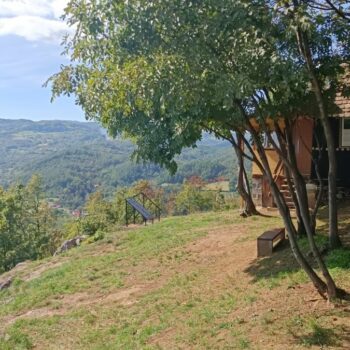 Novak’s Cave is a viewpoint located above Donja Krćina and Gornja Trnova in the municipality of Ugljevik, at an altitude of 386 meters. The viewpoint was named “Novak’s Cave” because, according to folk tales, the outlaw Starina Novak hid there during the resistance against the Ottoman Empire in this region. According to legend, he and his band lived in this cave. Not far from the cave, there are said to be indentations on a rock made by the hooves of Šarac, the horse of King Marko, another legendary figure.
Novak’s Cave is a viewpoint located above Donja Krćina and Gornja Trnova in the municipality of Ugljevik, at an altitude of 386 meters. The viewpoint was named “Novak’s Cave” because, according to folk tales, the outlaw Starina Novak hid there during the resistance against the Ottoman Empire in this region. According to legend, he and his band lived in this cave. Not far from the cave, there are said to be indentations on a rock made by the hooves of Šarac, the horse of King Marko, another legendary figure.




